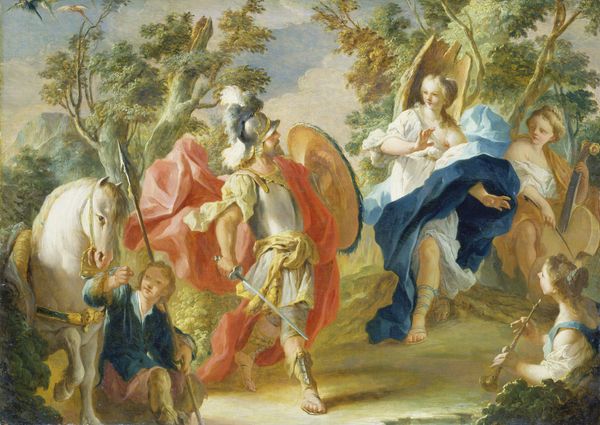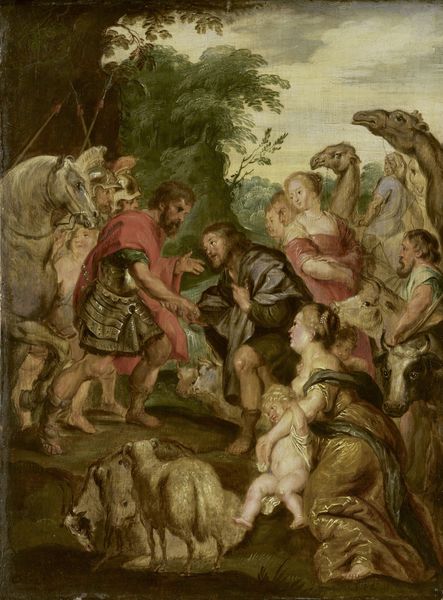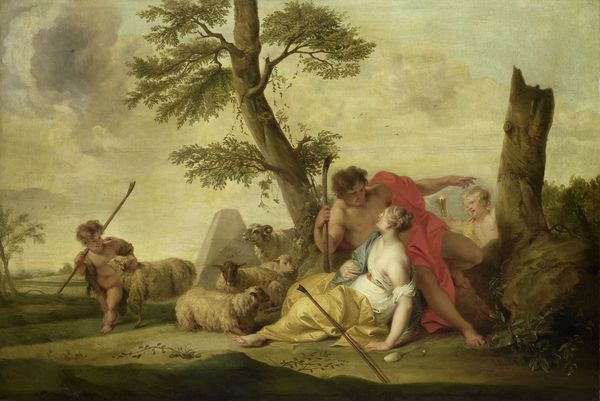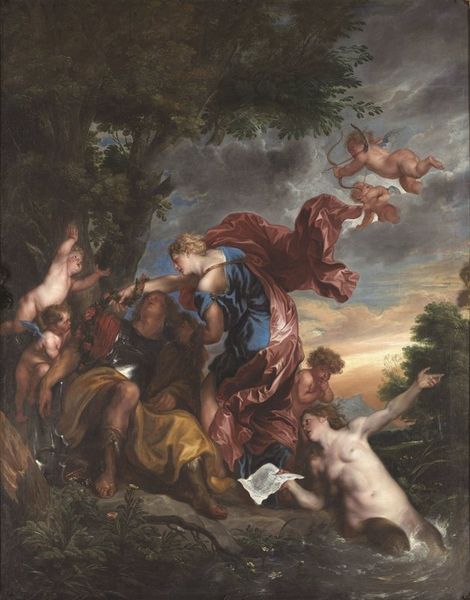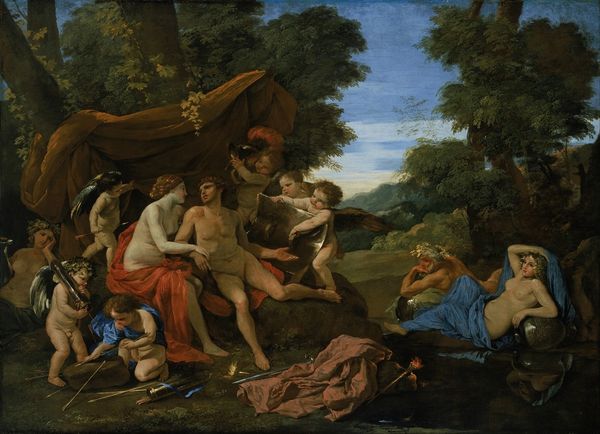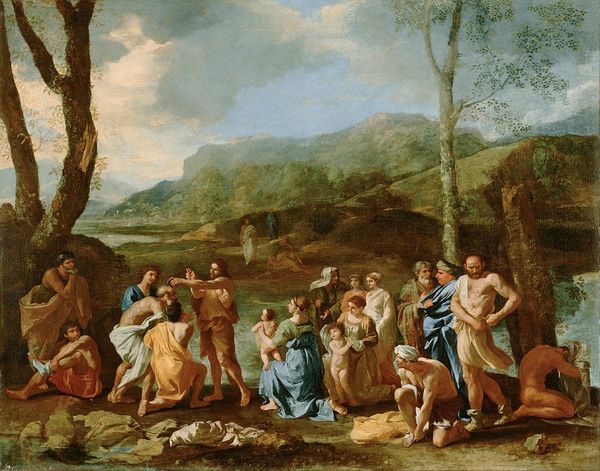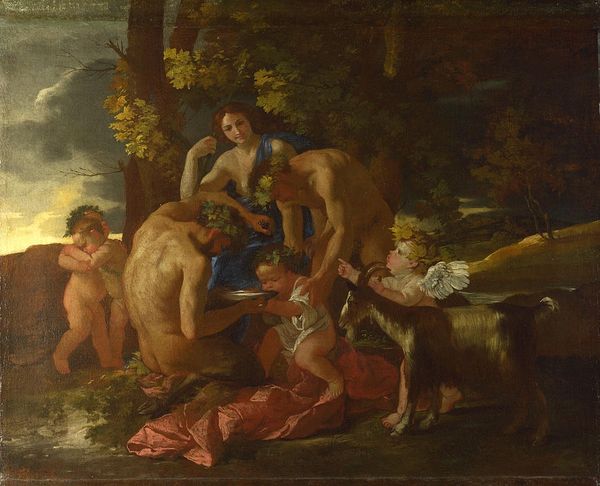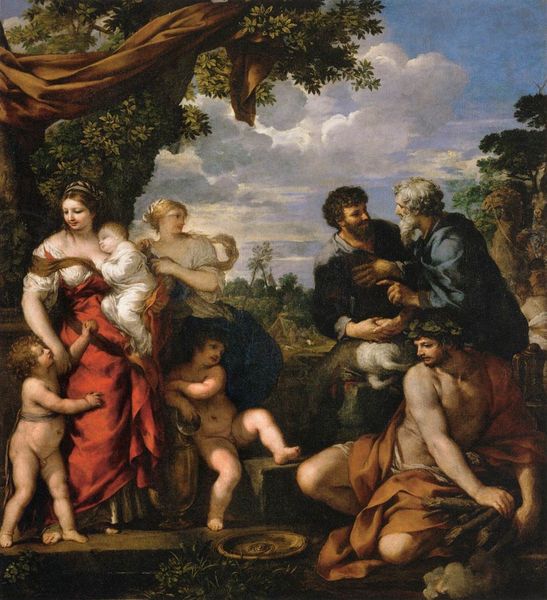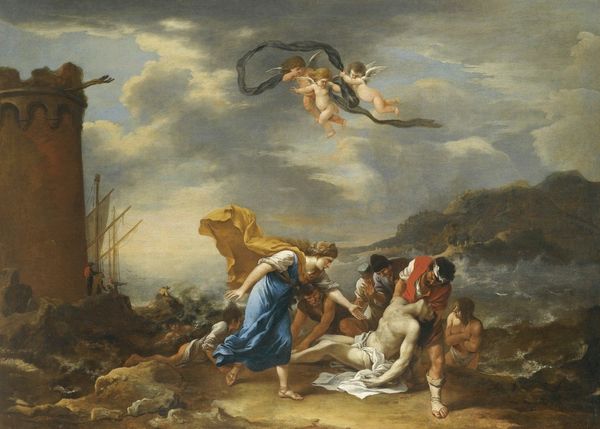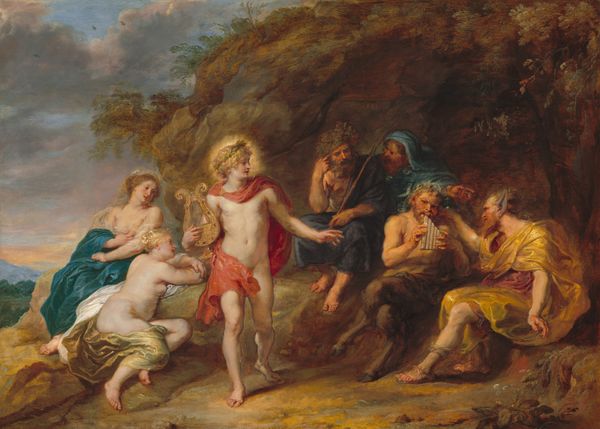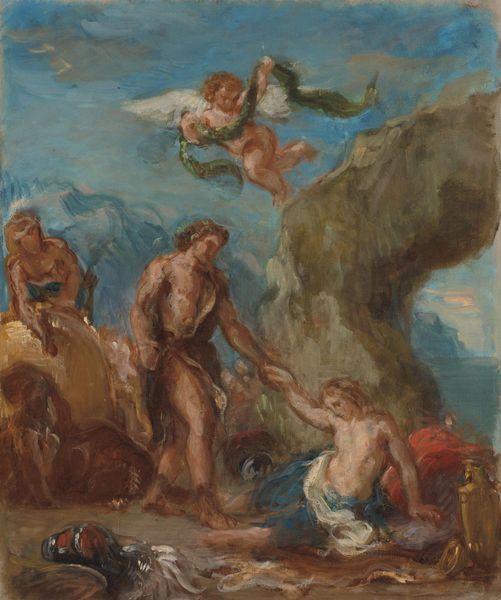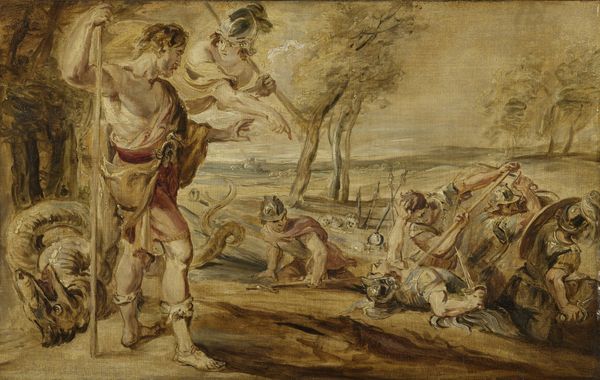
Jupiter, Disguised as a Shepherd, Seducing Mnemosyne, the Goddess of Memory 1727
Dimensions: height 240 cm, width 205 cm
Copyright: Rijks Museum: Open Domain
Jacob de Wit painted Jupiter, Disguised as a Shepherd, Seducing Mnemosyne, the Goddess of Memory in oil on canvas. The interplay of light and shadow casts a theatrical glow upon the figures, enhancing the scene's emotional intensity. De Wit's approach to this mythological subject reveals the formal elegance and classical sensibilities of the Baroque period. The composition is arranged with careful attention to balance, using diagonal lines from the top left eagle to Mnemosyne's seated position, creating a visual harmony that guides the viewer's eye through the scene. Mnemosyne's pale skin and flowing blue drapery contrast with Jupiter's earth-toned garments, emphasizing the moment of seduction. The brushstrokes are fluid, blending colors to create soft transitions that evoke a sense of idealized beauty. The artist also destabilizes the traditional depiction of power through the disguise motif, suggesting the complexities of identity and desire. The contrast between divine power and earthly disguise serves as a meditation on the nature of memory and its role in shaping perceptions.
Comments
No comments
Be the first to comment and join the conversation on the ultimate creative platform.

